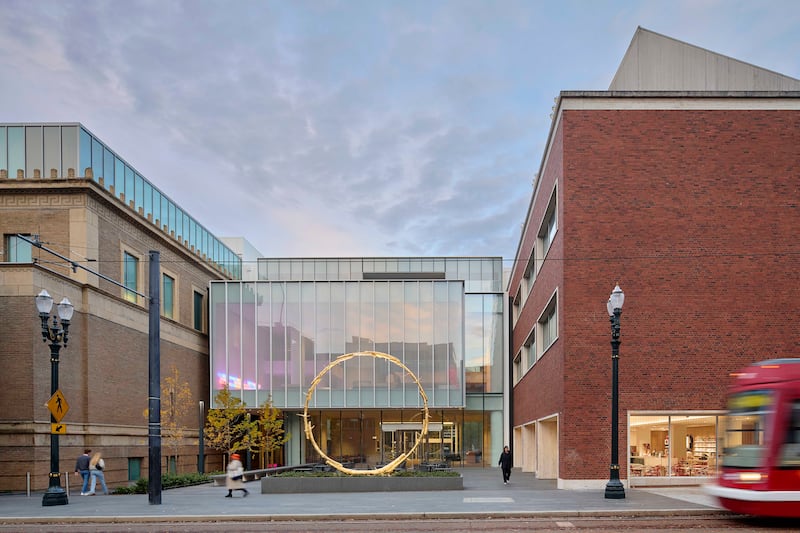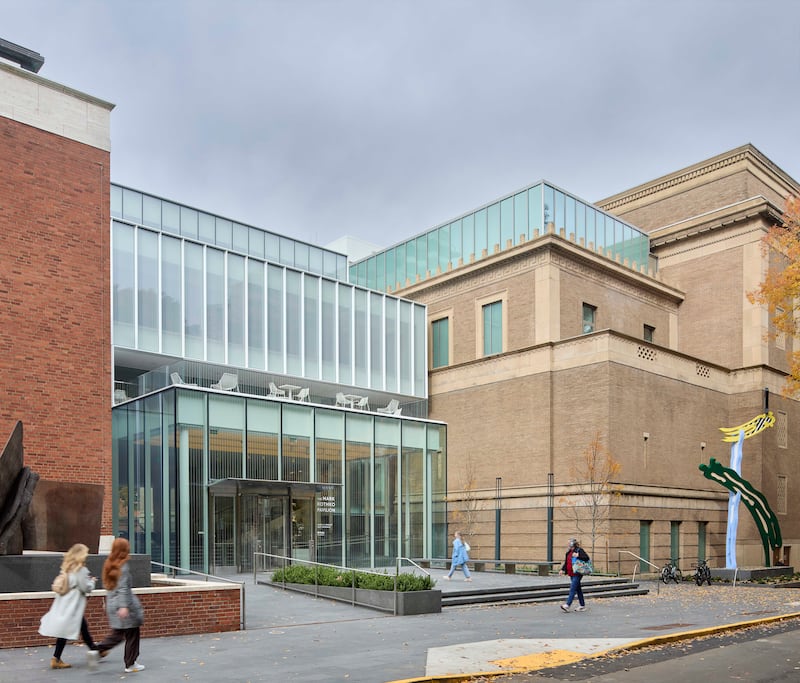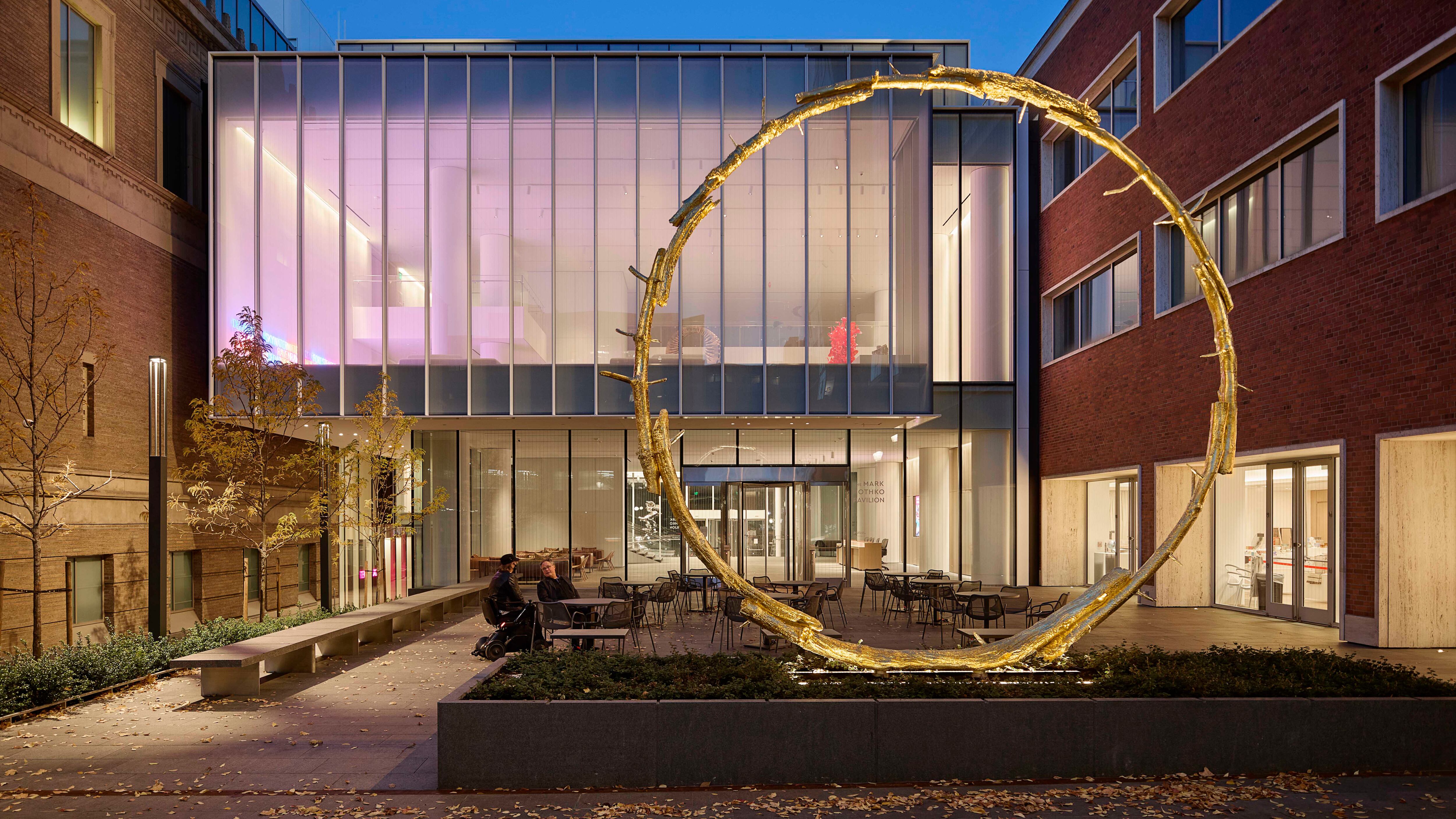Getting lost in art is an ideal way to forget about winter for a day. It can transport you to distant lands and eras—all while staying warm and dry in the same ZIP code. But, in the past, visitors to the Portland Art Museum were often physically getting lost in the building, too.
“It was beautiful in spots, but it was a rabbit warren,” says Brian Ferriso, PAM’s director.
It was practically a Portland rite of passage to get lost trying to find the underground tunnel that connected the museum’s two primary buildings: the original Main Building, designed in 1932 by famed Portland architect Pietro Belluschi, and the adjacent Mark Building, a 1924 former Masonic temple. Some guests were paying admission to the museum only to miss whole exhibitions or buildings because they could never find them.
Nine years and $111 million since PAM first announced the project, the museum’s leaders hope to have solved this problem through smart design and a massive architectural overhaul. Portlanders will get a chance to decide for themselves Nov. 20, when the completely transformed campus reopens to the public with a splashy weekendlong party.

The centerpiece of the project is the Mark Rothko Pavilion, which provides a new “front door” to the museum and connects the two historic properties in a more intuitive way. (Rabbit warren no more!) The glass Pavilion adds 21,881 square feet of new space, but the extensive renovation touches 100,000 square feet total, including upgraded areas. That pesky underground tunnel is gone, replaced by a new media gallery outside of the Whitsell Auditorium, which remains. (The basement actually is now the one floor no longer linking the historic buildings; visitors instead can use hallways on the four floors above.)
The namesake of the pavilion is late abstract expressionist painter Mark Rothko, who spent his childhood in Portland after emigrating here from present-day Latvia in 1913. He took his first art classes at PAM and graduated from Lincoln High School. PAM will feature art from the collection of the artist’s children, Christopher Rothko and Kate Rothko Prizel, over the next several years, including an exhibition of eight paintings from different periods in Rothko’s career that opens Nov. 20, along with the new pavilion.
In late August, PAM invited WW and other media outlets along on a hard-hat tour of the site, which was then still an active construction zone. Here’s what Portlanders can expect of their zhuzhed-up downtown museum:
Architecture
For inspiration, Ferriso and the architecture team—Portland’s Hennebery Eddy in collaboration with Chicago’s Vinci Hamp Architects and the builder Mortenson—looked eight blocks away to the downtown Apple store at Pioneer Place.
“I’ve been thinking about the impact Apple stores have had on us,” Ferriso says of the famously transparent tech retail chain. “They invited us in.”
To that end, the Rothko Pavilion is clad in custom glass that was very complicated to design, transport and install. The German glass was finished in Spain and then arrived in Portland in panels as tall as 28 feet. It’s heat-resistant—on that scorching August day, the glass was still cool to the touch from the inside of the building—and bird-safe because it’s semitransparent and white-fritted, meaning it has little lines in it that birds can see.

The design of the pavilion got off to a rocky start back in 2017 when PAM revealed the sketches only to face backlash from bikers and pedestrians, furious that the museum planned to cut off the Madison Street walkway between Southwest 10th and Park avenues. The walkway had been an open sculpture garden and a handy east-west throughway, though it closed every night. Responsive to the criticism, PAM pivoted and incorporated a sheltered, public passageway through the pavilion that will be open 24/7. Bikers and pedestrians will get a peek at the museum commons and an art gallery as they pass through.
There will be ample seating for guests in the commons, as well as various other parts of the pavilion. This was modeled after the offerings at New York’s Museum of Modern Art and the Whitney Museum of American Art.
“Areas for relaxation and contemplation are really important,” Ferriso says.
Also new for PAM: outdoor plazas where visitors can get a breath of fresh air, see a sculpture, and check out the views. From various plazas off the pavilion, you can see the First Congregational Church spire, the famed pine tree growing on the 25th floor of the PacWest Center and, after the leaves have fallen this winter, all the way to the Hawthorne Bridge.
Exhibitions
The expanded and renovated galleries will highlight nearly 300 major new acquisitions, alongside items that have rarely or never been on view. Keep an eye out for new works by art world heavy hitters, such as Jeffrey Gibson, Simone Leigh, Ugo Rondinone, Wendy Red Star, Pedro Reyes, Marie Watt and Carrie Mae Weems.

Other highlights include Portland artist Lisa Jarrett’s installation Tenderhead on the first floor of the Jubitz Center for Modern and Contemporary Art in the Mark Building, a space devoted to artwork about the Black experience. Jarrett uses objects from beauty supply stores and salons to examine those places as critical intersections of Black life. The show’s title refers to a question Jarrett and many others remember being asked while getting their hair done as children.
“Are you tenderheaded?” Jarrett says, in a press release. “It’s a loaded question.”
Finally, another must-see will be Pipilotti Rist’s installation 4th Floor to Mildness, a West Coast premiere of this 2016 work by the experimental Swiss artist. Visitors are invited to lie down on raftlike beds and watch overhead projections of an aquatic environment. There will be a chill, melodic soundtrack and—if you stay long enough—you may experience a sensation of floating. According to Rist’s artist statement, the work “describes the fantasy of being an organic plant…and simulates our dissolution into water, mud, slime, molecules and atoms.” The slime fantasy will be held in the new Crumpacker Center for New Art, which used to be the library, through Jan. 2.
Opening & Eats
Typically, it’s wise to let the hype die down before trying to visit a new venue, but this winter, it’s worth battling the crowds to get into PAM right away: The museum will celebrate its Nov. 20 grand reopening with a four-day party of free community access to the museum. Activities will include music, food carts and art making.

The museum also upped its snack game when it announced a new cafe, Coquelico (pronounced ko-KLEE-koh), by the team at Providore Fine Foods. Offerings will include European bistro-style dishes such as toasted house loaf with ricotta and caramelized honey, Lyonnaise salad, tartines and seasonal pavlovas.
“Food is art, and we hope that people will come and see some really beautiful art, and then sit down and have a continuation of that on the plate,” says Kaie Wellman, Providore’s co-owner.
There are certainly worse ways to lose yourself on a winter’s day.
Oregon Winter is Willamette Week’s annual winter activity magazine. It is free and can be found all over Portland beginning Friday, November 21, 2025. Find your free copy at one of the locations noted here, before they all get picked up.

